The other day, I was out scouting alleys, and decided to take a walk up to Broadway Alley, which runs from East 26th – 27th between Lex & 3rd.
Broadway Alley doesn’t get much filming*, but I figured I’d take some pictures and see what the current status was.
Broadway Alley has a pretty great alley look, with crumbling, grime-covered brick, tangles of fire escapes, graffiti and barbed wire. But as I walked down the alley, I noticed something I’d never seen before…
…Was that dirt I was walking on?
Is this where the pavement ends? Could this be the last dirt road in Manhattan??
Officially, the last two Manhattan dirt streets were paved over in 1938, an event important enough to make the NY Times:
Both were pretty far north: Laurel Hill Terrace up in the West 180’s…
…and Payson Ave, way up in Inwood:
While it’s neat to think that the DOT somehow missed this one forgotten road, Broadway Alley is actually privately owned, and has been since its inception. According to the NY Times, the route was laid out sometime between 1827-1832. By 1860, it appears on maps as Broadway Alley, perhaps selected to give newly constructed buildings here some class. Below, a 1909 map:
A NY Times reporter visiting the “unfortunate” thoroughfare in 1879 was none-too-impressed: “On the one hand are stables with ragged stable boys lying in the sun and enjoying more odors at a breath than Coleridge found in Cologne. On the other is a broken and blistered and dingy and half-windowless row of tenement houses with dusky African faces grinning from every pane, African babies, with curly heads, lying in the gutter, and African matrons sitting on flag-stones talking the latest gossip.”
When you enter from 27th Street side, you’ll find that the northern portion has been paved, and is actually pretty clean and non-descript for an alleyway.
But about halfway down, the pavement ends and the fun begins.
One of my favorite bits are the ancient wooden garage doors, located on the last remaining tenement from the days when Broadway Alley was lined with the fronts of buildings, rather than the rears.”
This is where the photogenic alley stuff kicks in, like the web of fire escapes set into ancient brick:
And really, what makes a more archetypal alley than corrugated steel and razor wire fencing?
If you look closely, you’ll find small patches of Belgian blocks, suggesting a time when these once covered the entire byway:
A brick arch hidden in grime:
At the southern end is this fantastic Type-G wall lamp. While the actual light is a (pretty silly looking) modern addition, the base has been in place since the early 1900’s:
Doing some research after shooting Broadway Alley, I see that I’m about the last person to realize there’s a dirt road left in Manhattan. The NY Times alone has written about it three different times (ha, that last article almost reads like there isn’t an ounce of dirt in the five boroughs), and I see that Kevin Walsh of Forgotten-NY did a piece on it just this last July.
But is this really the last dirt road in Manhattan?
As I continued working my way north scouting alleys, I finally came to Sylvan Court up in Harlem:
Sylvan Court is a delightful little alley leading to a series of townhouses built in the late 1800’s:
Unfortunately, the block isn’t landmarked, so who knows what will happen? Note the boarded-up property on the left:
A little too charming for the dank, dilapidated NY alley scene I was scouting for, but definitely a place I hope to one day see playing a starring role on the big screen:
Then, as I was leaving, I noticed something: dirt! A second unpaved road in Manhattan!
Though it loses points for not being a through road, I actually think I like it more for how it brings you back to a time when these buildings were stables, and the surrounding area was a farming village.
Because both Broadway Alley and Sylvan Court are private, I don’t think you can technically claim either as an official, DOT-overlooked dirt road. But it’s nice to know the pavement ends somewhere.
-SCOUT
PS – Why isn’t Broadway Alley seen in more movies? Because it’s privately owned, each building wants $5,000 for the six feet in front of their property, and $30,000 or so is a little steep when you can just film in the far superior Cortlandt Alley for free.
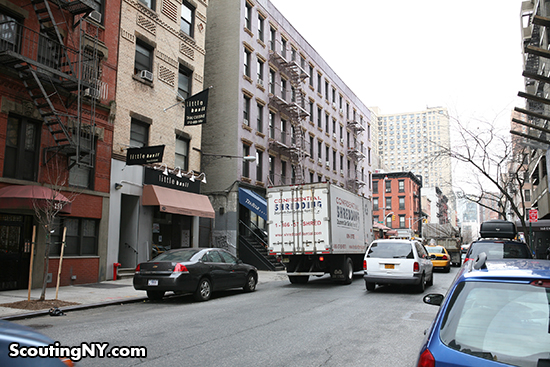
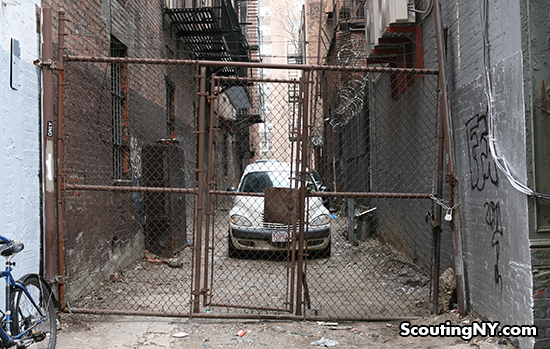

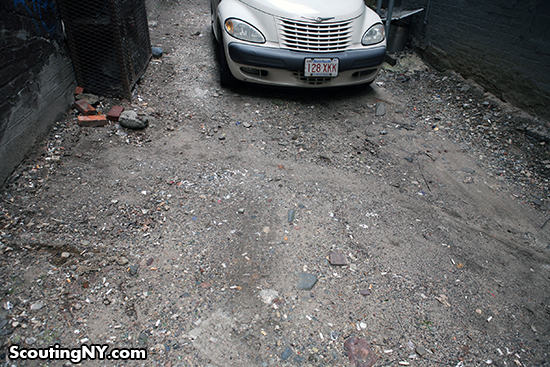
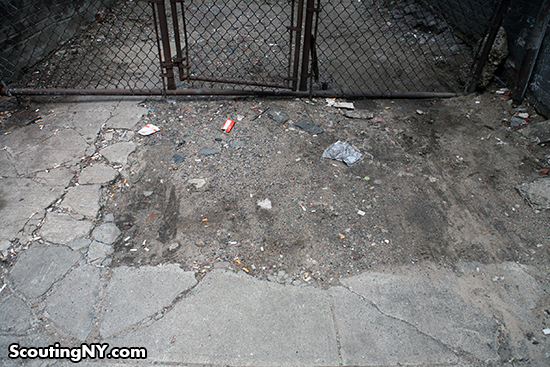


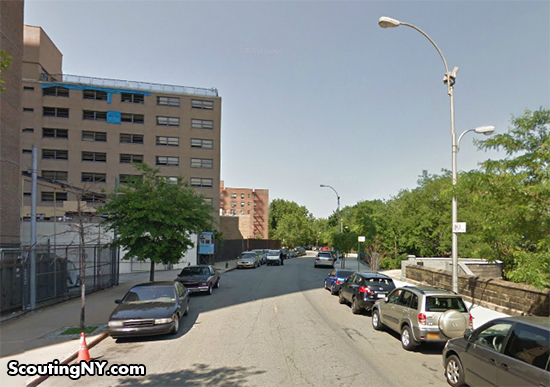
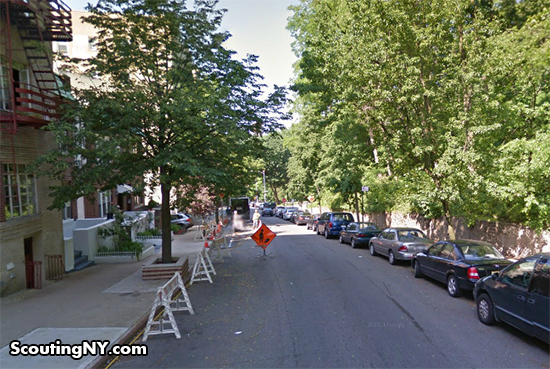
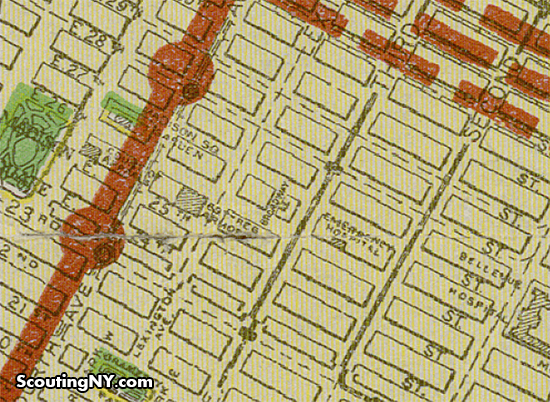
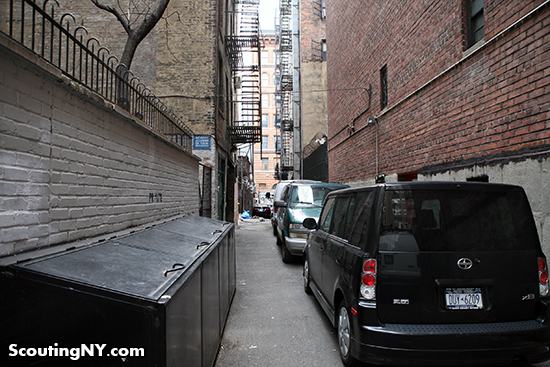
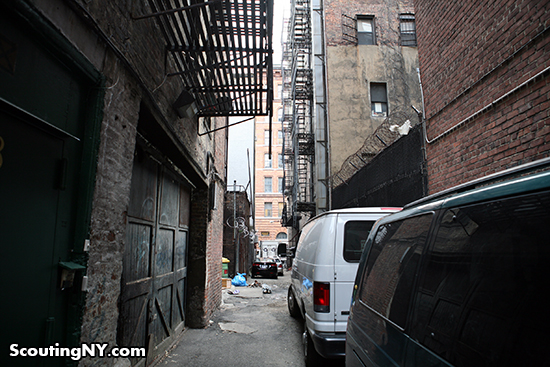
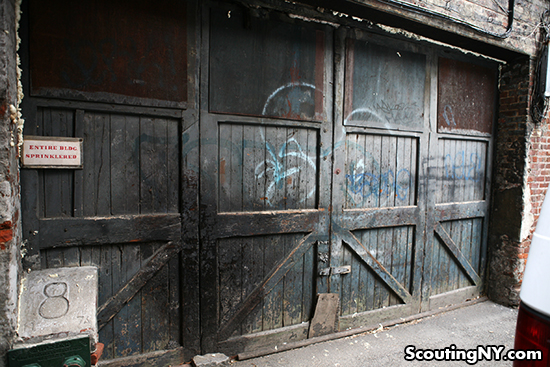
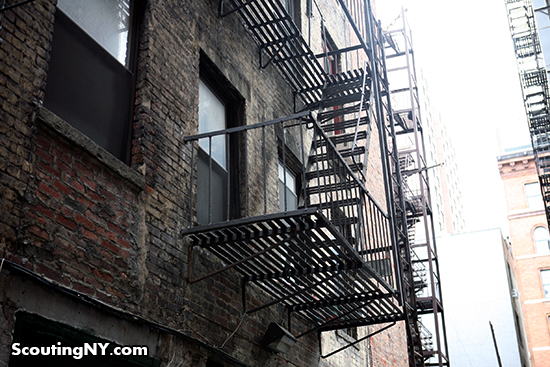

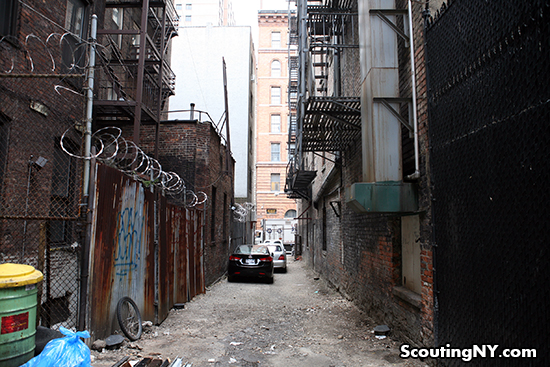
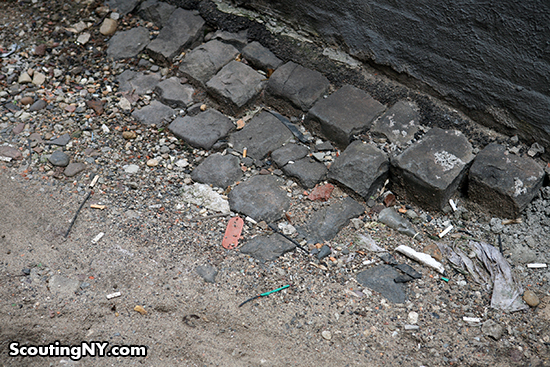
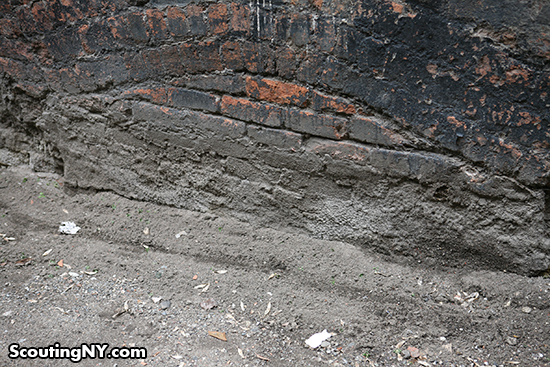
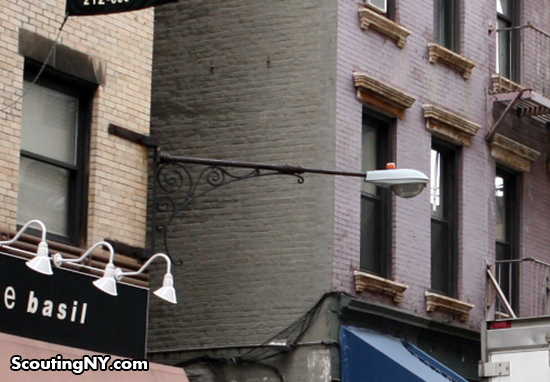
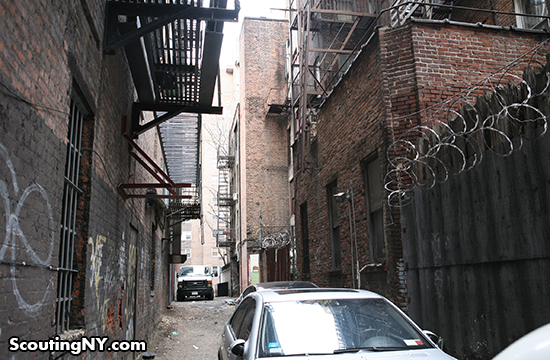

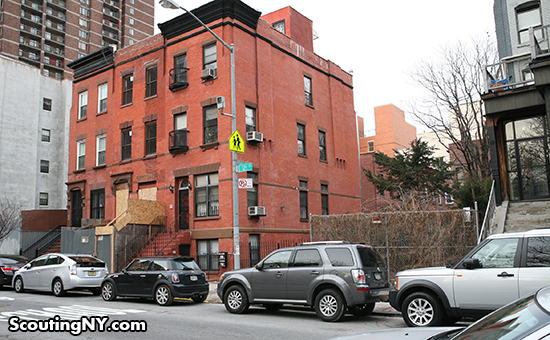

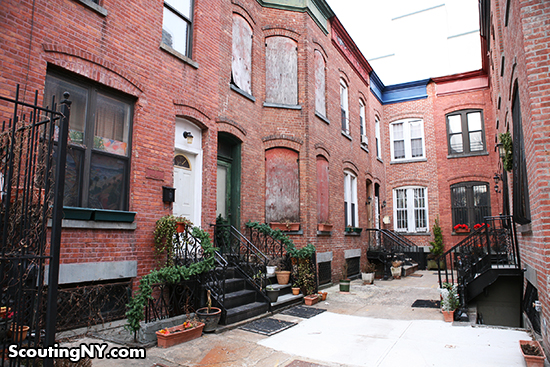
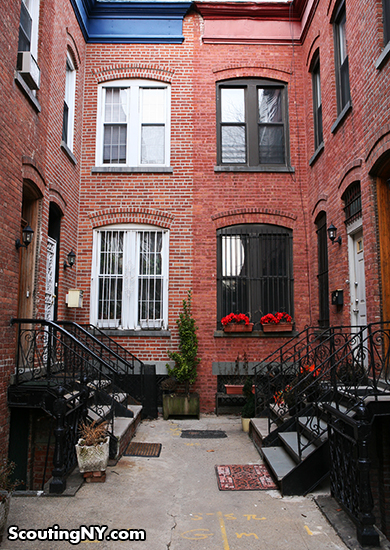
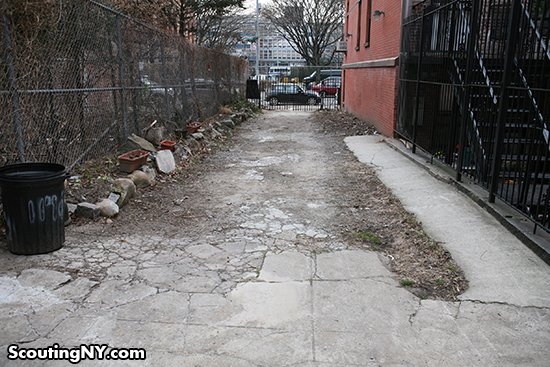
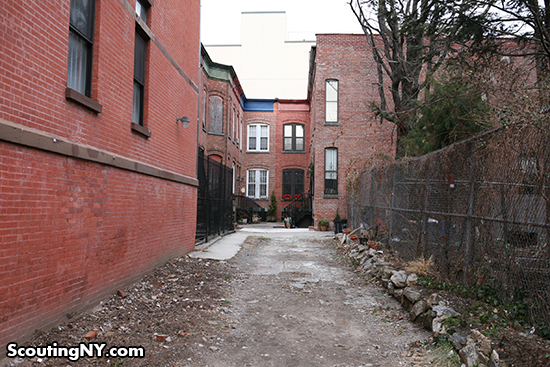

My favorite alley remains the one off Nevins Street (just north of Union) in Brooklyn. Nice crisscrossing fire escapes and a dilapidated pedestrian bridge.
http://www.samueljohnson.com/blog/parchives/050301.html
What intrigues me is how the heck those cars get in and out? There doesn’t seem enough space for any to pass each other?
(btw, may I suggest ‘Sweet Charity’ for another of your then-and-now’ guides?)
We shot a scene for Daredevil in there in 2003, it was used as a storage yard for hotdog carts that were dispatched from of one of the buildings facing the alley. I haven’t eaten a street dog since then when I saw what goes on in one of those distribution depots.
On shoot day, a bike messenger rode by and laughed at us Hollywood folk for renaming it Broadway Alley, he said we were nowhere near Broadway and that every New Yorker who saw the movie was going to laugh. I told him to check his map and have a nice day.
I was a bit confused your your description ‘Belgian blocks’ until I realised you were referring to cobblestones, which can still be found here in UK. And many roads that have smooth tar surface underneath still have the old and very hard wearing cobbles, particulrly where I live in Sheffield and other Northern English towns. I’m sure some were featured in ‘The Full Monty’ and ‘Billy Elliot’
The Paris-Roubaix bike race is infamous for it’s pavé or cobblestones and maybe where the term ‘Belgian Bricks’ may have come from.
https://en.wikipedia.org/wiki/Paris-Roubaix
Hey Scout,
I love how you find beauty in things that other people pass by. Look forward to your next post!
-Marissa (www.hipandhealthykids.com)
I believe that there is an unintentional one in Harlem, it might have been paved at some point. At 128th street (it’s not open to car traffic though) between St. Nichoals Terrace and St. Nicholas Ave.
The cobbles here (and in Paris-Roubaix, which BTW is entirely in France) are “Belgian” in the sense that they came from the Congo, which was a Belgian colony at the time. I think a lot of the West Side Highway used these as well.
I can’t say this often, but I found it before Scouting NY did…
http://forgotten-ny.com/2012/07/on-broadway-alley/
and there’s…
http://forgotten-ny.com/category/alleys/
Have you ever been to this courtyard/dead end street? West 186th Street between Audubon and Amsterdam.
The dead end street off 186th is called Washington Terrace. Half the buildings have been torn down now, but I can only imagine it was once a very nice street to live on. It is paved with Belgian block.
Years ago we lived in Jersey City and had a “paper road” behind our property. From time to time it was necessary to call the Police and alert them if there was inappropriate activity going on. Because it was a paper road, it did not appear on the police maps and we would have to give the police directions to find the road. It is still that way today, but at least Google knows it exists.
Technically cobbles are stones left in their natural, rounded shape, and usually defined as between 2.5″ and 10″ in maximum dimension. Belgian block is a quarried stone that has been squared off to provide a more uniform shape that is easier to set in an organized manner. They’re also sometimes referred to as setts.
While almost everyone in the U.S. would also refer to the pavement shown as a cobble stone street, it is technically Belgian block.
City Island- Bx NY has such roads- outer boro count?
It’s not a dirt road if it was paved at some time. Nowadays a totally unpaved road would likely have rat holes in it. As these don’t, I suspect the original paving has simply been covered over by time and a deposit of dirt likely generated over the intervening years.
Very interesting post!
Similar to unpaved alleys, here is something to potentially discuss: places where the sidewalk is still dirt, never cemented. In Midwood, Brooklyn there were a couple that got cemented for the first time in the 1990’s. I’m sure there must be others around the outer boroughs.
Spot on, and glad to learn the background of cobblestones being called ‘Belgian blocks’, though Cortlandt is still the alley that always makes my day,in part for being a secret treat that’s hidden in plain sight
Great article, but looks like Sylvan Ct has been newly paved just recently, upon doing a Google view. Lost some character but I guess the vehicles like it better.
Didn’t the Jada Pinkett Smith character in Bamboozled live on Sylvan Alley? I seem to remember seeing that street in some film.